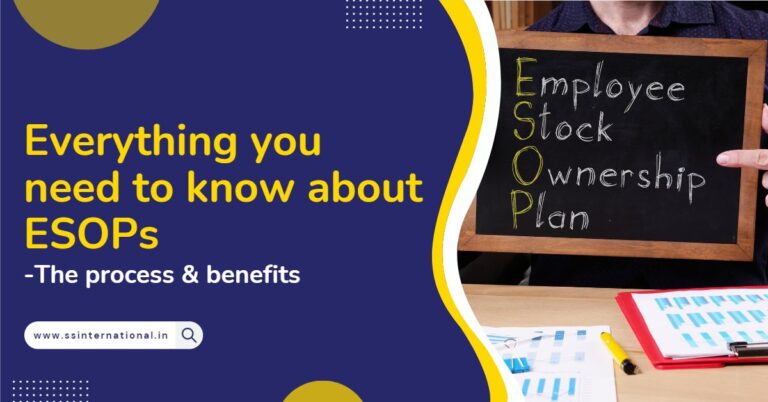In an era where businesses are increasingly held accountable for their impact on the planet, society, and governance standards, Environmental, Social, and Governance (ESG) factors have emerged as critical drivers of value. ESG is no longer a “nice-to-have” but a “must-have” consideration for businesses looking to attract investors, build resilience, and drive long-term growth.
Investors, regulators, and consumers are placing a premium on organizations that exhibit strong ESG performance. Companies that integrate ESG principles into their strategies are not only safeguarding themselves against future risks but are also enhancing their market valuations.
Why does this matter? According to studies, companies with robust ESG practices outperform their competitors in valuations. For instance, a 2023 MSCI report found that businesses with high ESG scores experience up to a 10-15% valuation premium compared to their less sustainable counterparts.
This blog delves into how ESG factors influence business valuation, why they matter in today’s financial world, and how organizations can quantify the impact to drive sustainable growth.
Understanding ESG and Its Components
To grasp how ESG factors influence valuation, it’s essential to first break down the three core pillars: Environmental, Social, and Governance. These interconnected dimensions assess a company’s long-term sustainability and ethical operations, directly influencing its financial health and market perception.
a. Environmental (E): Driving Sustainability and Reducing Costs
The environmental pillar focuses on how a company impacts and manages its interaction with the natural environment. Factors include carbon emissions, energy efficiency, water usage, waste management, and overall resource conservation.
Why It Matters: Environmental responsibility helps mitigate operational and regulatory risks while enhancing efficiency. Companies adopting green initiatives often benefit from reduced costs and a competitive edge.
Example:
Tesla, a leader in sustainable electric vehicles, has seen its market valuation skyrocket, largely due to its focus on clean energy. Investors perceive Tesla’s environmental positioning as a competitive advantage over traditional automakers still reliant on fossil fuels.
Unilever’s Sustainable Living Plan reduced costs by €1.2 billion over a decade through initiatives like minimizing water and energy consumption.
By demonstrating a commitment to sustainability, companies enhance investor confidence, reduce penalties from regulatory bodies, and improve profitability.
b. Social (S): Empowering People and Communities
The social pillar focuses on a company’s relationships with its employees, customers, suppliers, and the broader community. Key areas include workforce diversity, human rights, workplace conditions, customer satisfaction, and social impact initiatives.
Why It Matters: Companies with strong social policies attract top talent, improve employee productivity, and build stronger relationships with customers and communities, driving long-term value creation.
Example:
Microsoft has invested heavily in diversity and inclusion programs. By fostering an inclusive work culture, Microsoft has not only improved employee satisfaction but has also enhanced innovation and creativity, contributing to its high valuation.
Fashion retailer Patagonia embeds social responsibility into its brand DNA. By promoting fair wages and ethical supply chain practices, the company has cultivated immense customer loyalty and long-term brand equity.
Impact on Valuation: Investors view socially responsible companies as less risky and more sustainable in the long run. Satisfied employees, ethical practices, and strong community engagement directly impact a company’s operational stability and reputation.
c. Governance (G): Ensuring Ethical Leadership and Transparency
The governance pillar evaluates the quality of leadership, transparency, and corporate ethics within an organization. It includes factors like executive compensation, board diversity, shareholder rights, and anti-corruption practices.
Why It Matters: Strong governance reduces operational and financial risks, ensuring ethical decision-making and accountability. Investors prioritize well-governed companies due to their stability and ability to deliver consistent performance.
Example:
Apple maintains high governance standards by ensuring transparency in shareholder communication, ethical supply chains, and strict compliance with global regulations. This approach has earned investor trust and premium valuations in the market.
In contrast, companies with weak governance, such as WeWork during its failed IPO, often suffer steep valuation declines due to concerns over leadership credibility and risk management.
Impact on Valuation: Strong governance is critical for attracting institutional investors and ensuring sustainable financial performance. Companies with clear, transparent policies command higher valuation multiples and lower risk premiums.
How ESG Components Work Together to Drive Value
While the three pillars—Environmental, Social, and Governance—are distinct, their collective influence is what makes ESG a powerful value driver. For instance:
- Companies reducing their environmental impact also improve cost efficiency and mitigate regulatory risks.
- A strong social culture enhances brand loyalty and workforce retention.
- Robust governance practices ensure transparency, attracting long-term investors.
Together, these ESG dimensions signal a company’s ability to thrive in a rapidly changing world, enhancing its financial outlook and overall valuation.
Understanding ESG and Its Components
To understand how ESG impacts a company’s valuation, it’s essential to break down the three pillars—Environmental, Social, and Governance—and explore the various aspects they encompass. These pillars serve as a framework for evaluating a company’s ability to operate sustainably, ethically, and profitably.
a. Environmental (E): Managing Environmental Impact and Sustainability
The Environmental pillar assesses a company’s interaction with the natural environment and how it mitigates ecological risks. Investors view strong environmental performance as a sign of operational efficiency, cost savings, and future-proofing against environmental regulations.
Key Aspects Covered:
Carbon Emissions:
- Measurement of direct (Scope 1) and indirect (Scope 2 and Scope 3) greenhouse gas emissions.
- Efforts to achieve carbon neutrality or net-zero emissions.
Example: Amazon’s Climate Pledge aims to reach net-zero carbon emissions by 2040.
Energy Efficiency:
- Adoption of renewable energy sources (solar, wind) and reduction of non-renewable energy consumption.
Example: Google has operated on 100% renewable energy since 2017, lowering operational costs and attracting ESG-focused investors.
Waste Management:
- Implementation of circular economy practices like recycling, upcycling, and minimizing waste generation.
Example: Unilever reduced its plastic waste through sustainable packaging initiatives, achieving cost savings while enhancing its brand image.
Water Conservation:
- Initiatives to reduce water usage, manage wastewater, and prevent pollution.
Example: Coca-Cola adopted water replenishment programs, returning water to local ecosystems in communities they operate.
Biodiversity and Deforestation:
- Protecting natural ecosystems, reducing deforestation, and conserving biodiversity in business operations.
Example: Nestlé has implemented deforestation-free supply chains for cocoa and palm oil production.
Climate Risk Management:
- Addressing risks related to climate change, such as extreme weather events or resource scarcity.
Example: Real estate companies now assess flood and fire risks to properties due to changing climates.
b. Social (S): Fostering People, Diversity, and Ethical Relationships
The Social pillar examines how a company manages relationships with its employees, customers, suppliers, and the broader community. Social responsibility is increasingly linked to brand value, operational stability, and stakeholder trust.
Key Aspects Covered:
Workforce Management:
- Ensuring safe working conditions, fair wages, and opportunities for professional growth.
- Example: Salesforce invests heavily in employee development programs and mental health initiatives.
Diversity, Equity, and Inclusion (DEI):
- Representation of women, minorities, and marginalized groups in leadership and workforce roles.
Example: Microsoft publishes annual diversity reports showcasing improvements in leadership diversity.
Employee Satisfaction and Retention:
- Measuring employee satisfaction through surveys and implementing initiatives to retain top talent.
Example: Companies like Adobe report low attrition rates due to their people-first approach and flexible work policies.
Community Engagement and Philanthropy:
- CSR (Corporate Social Responsibility) initiatives supporting education, healthcare, and local communities.
Example: Tata Group allocates a significant portion of its profits toward community welfare programs in India.
Customer Satisfaction and Privacy:
- Protecting customer data, ensuring transparency in practices, and maintaining product safety.
Example: Apple’s strict data privacy policies have strengthened customer trust, giving it a competitive edge.
Supplier and Ethical Sourcing:
- Monitoring supply chain labor practices and ensuring ethical sourcing of raw materials.
Example: Patagonia ensures fair wages for factory workers and prioritizes eco-friendly raw materials.
Human Rights Compliance:
- Avoiding exploitation, child labor, or unsafe work conditions within operations and supply chains.
Example: Tech giants like HP and Dell enforce strict human rights compliance across global suppliers.
c. Governance (G): Ensuring Ethical Leadership and Transparency
The Governance pillar evaluates the quality of leadership, decision-making processes, and accountability within a company. Strong governance structures ensure ethical operations, mitigate fraud risks, and improve investor confidence.
Key Aspects Covered:
Board Composition and Diversity:
- Assessing diversity in board leadership and independence to ensure balanced decision-making.
Example: Goldman Sachs announced it would only underwrite IPOs of companies with at least one diverse board member.
Executive Compensation and Incentives:
Aligning executive pay with long-term company performance and ESG goals to avoid short-termism.
Example: Unilever ties executive bonuses to ESG performance metrics like emissions reductions.
Transparency and Reporting:
Disclosing financial and non-financial performance openly through annual reports and ESG disclosures.
Example: Novo Nordisk publishes integrated ESG reports outlining governance and operational achievements.
Anti-Corruption and Ethical Practices:
Enforcing policies to prevent fraud, bribery, and corruption at all organizational levels.
Example: Siemens implemented a strict anti-corruption compliance system after its high-profile scandal in the 2000s.
Shareholder Rights and Engagement:
Ensuring equal treatment of shareholders and giving them a voice in decision-making processes.
Example: Companies like Procter & Gamble regularly engage with institutional investors on governance issues.
Risk Management and Internal Controls:
Implementing systems to identify, assess, and manage operational, financial, and ESG risks effectively.
Example: JP Morgan integrates risk governance with its broader ESG strategy to minimize disruptions.
The Interplay of ESG Components
While these pillars—Environmental, Social, and Governance—operate independently, their collective impact determines the sustainability and resilience of a company:
- A company reducing its carbon footprint (E) while maintaining strong workforce diversity (S) and transparent governance (G) signals a well-rounded business model.
- Companies excelling in all three pillars tend to experience higher valuations, lower cost of capital, and stronger investor trust.
- For businesses, ESG is not just about compliance; it’s a strategic advantage that enhances long-term profitability, builds stakeholder loyalty, and reduces exposure to risks.
Why ESG Matters in Business Valuation
The importance of Environmental, Social, and Governance (ESG) factors in business valuation has surged in recent years. Investors, stakeholders, and regulatory bodies now consider ESG performance a key indicator of a company’s long-term sustainability, profitability, and risk exposure. Companies with high ESG scores tend to enjoy higher valuations, lower risk premiums, and improved investor confidence, while those that neglect ESG face increased scrutiny, regulatory fines, and declining market trust.
This section explores why ESG is now a critical component of business valuation and how it influences financial metrics.
a. ESG as a Risk Mitigation Tool
Companies that actively integrate ESG strategies are better equipped to handle potential risks that could otherwise erode their valuation. ESG helps mitigate:
Regulatory and Compliance Risks:
Governments and international organizations are tightening regulations on sustainability, emissions, labor rights, and ethical business practices.
Example: The European Union’s Corporate Sustainability Reporting Directive (CSRD) requires large companies to disclose ESG-related risks, affecting their valuation if they fail to comply.
Operational Risks:
Companies failing to address climate risk, workplace conditions, or supply chain disruptions may face production setbacks and reputational damage.
Example: Automakers like Volkswagen saw a 30% drop in valuation after its 2015 emissions scandal, where non-compliance with environmental regulations led to billions in fines.
Reputational and Brand Risks:
ESG-conscious consumers and investors penalize brands linked to unethical labor practices, environmental harm, or corporate fraud.
Example: Boohoo, a fast-fashion retailer, lost over £1 billion in market value in 2020 following allegations of poor working conditions in its supply chain.
Companies with strong ESG policies demonstrate resilience, ensuring investors that they are future-proofing against regulatory and reputational setbacks.
b. ESG’s Influence on Investor Preferences
Institutional investors, private equity firms, and retail investors are prioritizing ESG-aligned businesses due to their long-term growth potential and risk management advantages.
Rise of ESG Investing:
ESG funds now represent a significant portion of global assets under management (AUM).
Stat: According to Bloomberg, ESG-related investments are expected to surpass $50 trillion by 2025, making up over a third of total global AUM.
ESG Index Performance:
Companies with strong ESG performance often outperform traditional indices.
Example: The MSCI ESG Leaders Index has consistently outperformed the S&P 500, indicating that ESG-compliant businesses generate higher returns.
Private Equity and Venture Capital Preferences:
Many investment firms now screen businesses for ESG compliance before funding.
Example: BlackRock, the world’s largest asset manager, has shifted investment focus toward companies with strong ESG track records, influencing public company valuations.
c. Cost of Capital: The ESG Discount or Premium
ESG factors directly impact a company’s cost of capital, which in turn affects valuation models such as Discounted Cash Flow (DCF) and market multiples.
Lower Cost of Debt:
Companies with strong ESG profiles benefit from lower borrowing costs.
Example: Businesses with high ESG ratings can access sustainability-linked loans, where interest rates are reduced if ESG targets are met.
Reduced Risk Premiums:
Investors and lenders assign a lower risk premium to ESG-aligned companies, improving their valuation.
Example: A study by Harvard Business Review found that companies in the top ESG quartile experience up to 20% lower risk premiums than their peers.
ESG as a Competitive Advantage:
Sustainable brands attract loyal customers, reducing business volatility and increasing revenue stability.
Example: Companies like Tesla command premium valuation multiples, as their ESG-driven mission aligns with future market trends in clean energy.
d. ESG’s Impact on Cash Flows and Profitability
Beyond investor sentiment, ESG directly contributes to financial performance, cash flows, and profitability, enhancing valuation through:
Operational Cost Savings:
Implementing energy-efficient solutions lowers utility costs and improves margins.
Example: Companies like Walmart have saved billions by investing in energy-efficient warehouses and logistics.
Customer Loyalty and Brand Strength:
Consumers are willing to pay a premium for sustainable and ethical products.
Example: Brands like Patagonia and Nike have built strong ESG-backed reputations, driving long-term revenue growth.
Employee Productivity and Retention:
ESG-friendly companies attract and retain top talent, reducing HR and training costs.
Example: Salesforce ranks highly in ESG and has some of the lowest attrition rates in the tech industry.
e. Market Multiples: ESG’s Role in Valuation Comparisons
ESG plays a growing role in relative valuation methods, such as comparing P/E (Price-to-Earnings) ratios and EV/EBITDA multiples among industry peers.
High ESG Scores = Higher Multiples:
Companies with superior ESG credentials often trade at higher market multiples than competitors.
Example: Unilever, known for its strong sustainability commitments, consistently trades at a premium compared to traditional consumer goods companies.
Negative ESG Events = Lower Valuation Multiples:
Scandals or controversies can cause companies to de-rate, leading to lower valuation multiples.
Example: Facebook (Meta) suffered valuation declines following privacy scandals, as governance concerns affected investor confidence.
f. The Growing Role of ESG Ratings in Valuation
To quantify ESG’s impact on valuation, various rating agencies provide ESG scores that influence investment decisions and market sentiment.
Key ESG Rating Agencies:
- MSCI ESG Ratings – Assess environmental, social, and governance risks.
- Sustainalytics – Evaluates a company’s ESG risk exposure.
- FTSE4Good Index – Recognizes companies with strong ESG policies.
How ESG Ratings Affect Valuation:
- A high ESG score attracts institutional investors, boosting demand for a company’s stock and improving its valuation.
- A poor ESG score leads to investor withdrawals and stock price depreciation.
Example: After improving its ESG rating, Nestlé saw an increase in investor inflows, demonstrating how ESG compliance can enhance market perception and valuation.
Conclusion
The integration of Environmental, Social, and Governance (ESG) factors into business valuation is no longer a choice—it is a necessity. Companies that prioritize ESG are not just enhancing their corporate responsibility but also securing a strategic advantage in attracting investors, reducing risks, and driving long-term financial growth.
From mitigating regulatory, operational, and reputational risks to improving cost efficiency and profitability, ESG has become a key determinant of a company’s valuation. Institutional investors, private equity firms, and retail investors are increasingly favoring companies with high ESG scores, leading to lower risk premiums, better access to capital, and stronger market multiples.
Key Takeaways:
- ESG as a Value Driver: Companies with strong ESG performance enjoy higher valuations, lower borrowing costs, and increased investor confidence.
- Risk Mitigation Through ESG: Addressing environmental, social, and governance concerns reduces business volatility and regulatory penalties.
- Investor Preference Shifts: ESG-aligned businesses are more likely to receive funding and be included in high-performing sustainability indices.
As financial markets evolve, ESG compliance will no longer be just about corporate reputation—it will be a direct measure of a company’s financial strength and future prospects. Businesses that fail to adapt to the ESG landscape risk losing their competitive edge, investor trust, and ultimately, market value.
By embracing ESG principles today, companies can position themselves for sustained growth, financial resilience, and long-term market leadership.



